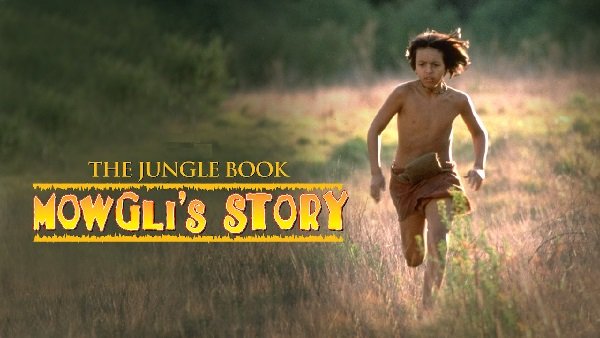The Jungle Book Story: A Timeless Tale by Rudyard Kipling
Rudyard Kipling’s The Jungle Book Story, published in 1894, is a collection of short stories and poems that have captivated readers for generations. Set in the exotic jungles of India, the book is best known for its central narrative about Mowgli, a human child raised by wolves. This literary classic combines adventure, morality, and anthropomorphic characters to create a vivid world that has inspired numerous adaptations and remains a cornerstone of children’s literature.
In this blog post, we will explore The Jungle Book in depth, covering its plot, characters, themes, and historical significance.
Table of Contents
- Introduction to The Jungle Book
- Overview of the Story
- Major Characters and Their Roles
- Themes in The Jungle Book
- The Historical Context of Kipling’s Work
- Popular Adaptations and Their Impact
- Lessons and Morals from the Story
- Frequently Asked Questions (FAQs)
- Conclusion
1. Introduction to The Jungle Book
Rudyard Kipling wrote The Jungle Book during his stay in Vermont, USA. Drawing heavily from his childhood experiences in India, Kipling’s stories are a fascinating blend of Indian culture, British colonialism, and universal themes of belonging and survival.
The book consists of seven stories, with three centering on Mowgli. The remaining tales, like Rikki-Tikki-Tavi, tell standalone stories featuring other animals, exploring their lives and struggles.

2. Overview of the Story
The main narrative of The Jungle Book revolves around Mowgli. Let’s dive into a detailed summary.
Mowgli’s Story
- Adoption by Wolves: Mowgli is discovered by a wolf pack as a baby and adopted by Raksha and her mate. They raise him alongside their cubs, under the watchful eye of Akela, the pack leader.
- Shere Khan’s Threat: The tiger Shere Khan claims Mowgli as his prey. However, the wolves protect him, with Baloo the bear and Bagheera the panther mentoring the boy.
- Life in the Jungle: Mowgli learns the “Laws of the Jungle” from Baloo and Bagheera. These teachings prepare him to navigate life in the wild.
- Confrontation with Shere Khan: The climax of Mowgli’s story involves a face-off with Shere Khan, where Mowgli proves his bravery and intelligence.
- Return to Humanity: Eventually, Mowgli returns to a human village, marking his transition from the wild to human society.
3. Major Characters and Their Roles
The characters of The Jungle Book are integral to its charm and depth.
| Character | Role | Traits |
|---|---|---|
| Mowgli | Human child raised by wolves; protagonist of the story | Brave, intelligent, adaptable |
| Baloo | A bear who teaches Mowgli the Laws of the Jungle | Wise, patient, kind-hearted |
| Bagheera | A black panther who mentors Mowgli | Protective, clever, loyal |
| Shere Khan | A tiger who seeks to kill Mowgli | Vengeful, arrogant, ruthless |
| Raksha | Mowgli’s adoptive wolf mother | Fierce, nurturing, protective |
| Akela | The leader of the wolf pack | Wise, authoritative, just |
| Kaa | A python who aids Mowgli at times | Mysterious, powerful, trustworthy |
4. Themes in The Jungle Book
Kipling’s work is rich with themes that resonate universally.
- Belonging and Identity
- Mowgli’s struggle between the jungle and human world highlights questions of identity and belonging.
- Survival and Adaptation
- The jungle teaches Mowgli valuable lessons about survival and adaptability.
- Morality and Laws
- The “Laws of the Jungle” emphasize the importance of discipline and respect for the natural order.
- Friendship and Loyalty
- Baloo, Bagheera, and the wolves exemplify unwavering loyalty and friendship.
5. The Historical Context of Kipling’s Work
Kipling wrote The Jungle Book during the height of British colonial rule in India. The stories reflect his fascination with Indian culture and wildlife but also contain undertones of colonial ideologies.
The Influence of India
Kipling’s vivid descriptions of the jungle and its inhabitants showcase his deep connection to the country where he spent his early years.
Colonial Perspectives
While the stories celebrate Indian wildlife, critics have noted elements of colonial hierarchy in the depiction of authority and civilization.
6. Popular Adaptations and Their Impact
Kipling’s Jungle Book has inspired numerous adaptations over the years.
Disney’s Animated Film (1967)
The 1967 animated adaptation brought The Jungle Book to a global audience with its memorable songs and humor.
Live-Action Films
Disney’s 2016 live-action/CGI remake offered a darker, more realistic take on the story while staying true to its themes.
Other Adaptations
- Animated series like Jungle Cubs
- Baloo’s character featured in TaleSpin
- Countless stage plays and TV shows
7. Lessons and Morals from the Story
The story imparts several timeless lessons:
- Adapt to Challenges: Mowgli’s journey shows the importance of adaptability.
- Respect Nature: The jungle and its rules highlight the need for harmony with the natural world.
- Value Friendship: True friends stand by you, even in the toughest times.
8. Frequently Asked Questions (FAQs)
What inspired Rudyard Kipling to write The Jungle Book?
Kipling’s childhood in India, combined with his love for storytelling, inspired the vivid world of The Jungle Book.
Is The Jungle Book a single story?
No, it is a collection of seven stories, three of which focus on Mowgli.
What is the main message of The Jungle Book?
The central message revolves around finding one’s place in the world, respecting nature, and upholding moral values.
9. Conclusion
Rudyard Kipling’s The Jungle Book is more than just a tale of adventure. It is a story about belonging, friendship, and the eternal struggle between man and nature. Its rich narrative, unforgettable characters, and universal themes ensure its place as a timeless literary classic.
